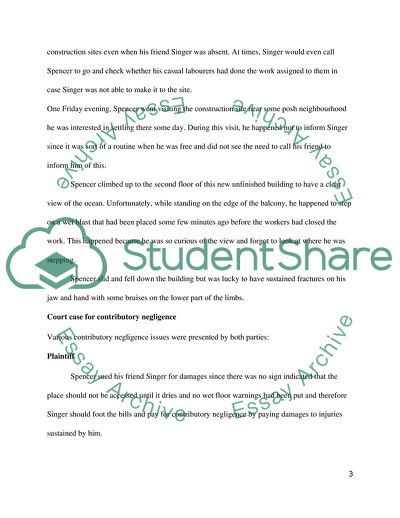Cite this document
(Contributory Negligence Report Example | Topics and Well Written Essays - 2000 words, n.d.)
Contributory Negligence Report Example | Topics and Well Written Essays - 2000 words. https://studentshare.org/law/1754632-working-in-the-law
Contributory Negligence Report Example | Topics and Well Written Essays - 2000 words. https://studentshare.org/law/1754632-working-in-the-law
(Contributory Negligence Report Example | Topics and Well Written Essays - 2000 Words)
Contributory Negligence Report Example | Topics and Well Written Essays - 2000 Words. https://studentshare.org/law/1754632-working-in-the-law.
Contributory Negligence Report Example | Topics and Well Written Essays - 2000 Words. https://studentshare.org/law/1754632-working-in-the-law.
“Contributory Negligence Report Example | Topics and Well Written Essays - 2000 Words”. https://studentshare.org/law/1754632-working-in-the-law.


